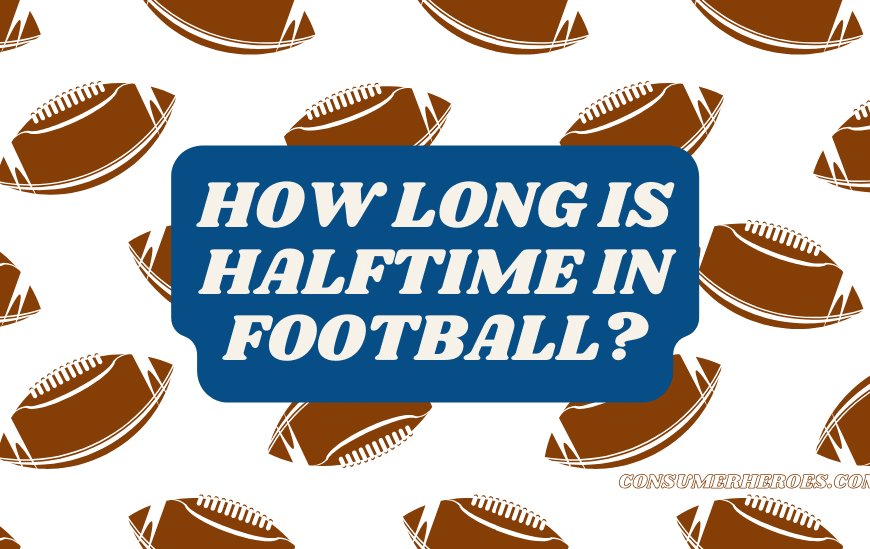Holding a football may seem like a straightforward task, but it’s actually a crucial aspect of the game. A proper grip can make all the difference in throwing, catching, and carrying the ball. Whether you’re a beginner or a seasoned player, mastering the art of holding a football is essential for success on the field.
The first step in holding a football is to determine your dominant hand. For right-handed players, the right hand should be placed on the back of the ball with the left hand supporting it from underneath. Left-handed players should reverse this grip. The fingers of both hands should be spread wide, with the tips of the fingers gripping the laces of the ball for maximum control.
Once you have the proper grip, it’s important to maintain it throughout the play. Keep the ball close to your body and use your non-throwing hand to secure it as you run. With practice and attention to detail, holding a football can become second nature, allowing you to focus on other aspects of the game and improve your overall performance.
Understanding the Basics
Football Anatomy
Before learning how to hold a football, it is important to understand its anatomy. A football is an oval-shaped ball made of leather or rubber, and it has four panels on each side. The panels are laced together with a leather lace, which runs along the length of the ball. The ball also has two ends, known as the tips.
Importance of Grip
Having a good grip on the football is crucial for any football player. A good grip allows the player to have better control over the ball, which is important for throwing, catching, and carrying the ball. The grip also helps to prevent the ball from slipping out of the player’s hands.
To hold a football properly, the player should place their fingers on the laces of the ball. The thumb should be placed on the bottom of the ball, opposite the fingers. The fingers should be spread apart, with the index and middle fingers on one side of the ball and the ring and pinky fingers on the other side.
It is important to grip the ball firmly, but not too tightly. A tight grip can cause the player to lose control of the ball, while a loose grip can cause the ball to slip out of the player’s hands.
In conclusion, understanding the basics of football anatomy and the importance of grip is essential for any football player. By following these guidelines, players can improve their ball control and prevent the ball from slipping out of their hands.
How to Grip a Football
Positioning Your Fingers
When gripping a football, it is important to position your fingers correctly. The fingertips should be placed on the laces of the ball. The thumb should be placed on the opposite side of the ball, with the tip of the thumb touching the base of the index finger. The remaining fingers should be wrapped around the ball, with the pinky finger tucked underneath.
Securing the Ball
To secure the ball, it is important to maintain a firm grip. The fingers should be tight around the ball, but not so tight that they are unable to move. The thumb should be pressed firmly against the ball, providing additional support and stability.
It is also important to keep the ball close to the body. This will help prevent fumbles and enable the player to maintain control of the ball. The ball should be held close to the chest, with the elbows tucked in and the forearms parallel to the ground.
By following these tips, players can grip the football with confidence and control.
Holding Techniques
Two-Handed Hold
The two-handed hold is the most common way to hold a football. This technique is used by quarterbacks, running backs, and wide receivers. To hold the football with two hands, the player should place their non-dominant hand on the bottom of the ball and their dominant hand on top. The fingers of both hands should be spread apart to create a stable grip on the ball.
Players should keep the ball close to their body with their elbows tucked in to protect the ball from being knocked loose by defenders. The two-handed hold is especially important for running backs who need to protect the ball while running through a crowded field.
One-Handed Hold
The one-handed hold is used by players who need to catch the ball with one hand. This technique is often used by wide receivers who need to make one-handed catches while running down the field. To hold the ball with one hand, the player should grip the ball with their fingers and palm. The player’s thumb should be placed on the opposite side of the ball from their fingers to create a secure grip.
Players should keep the ball away from their body with their arm extended to create space between the ball and defenders. The one-handed hold is a risky technique because the ball is more likely to be knocked loose by defenders.
Overall, players should practice both the two-handed and one-handed holds to be prepared for any situation on the field.
Common Mistakes to Avoid
When it comes to holding a football, there are a few common mistakes that can be easily avoided with proper technique and practice. Here are some of the most common mistakes to avoid:
1. Holding the Ball Too Tight
One of the most common mistakes that beginners make is holding the ball too tight. This can make it difficult to throw or catch the ball, and can also lead to fumbles. It is important to grip the ball firmly, but not so tightly that it cannot be easily released.
2. Holding the Ball Too High or Too Low
Another common mistake is holding the ball too high or too low. When holding the ball, it should be held at waist level, with the fingers spread wide across the laces. This allows for a better grip and more accurate throws.
3. Failing to Protect the Ball
Protecting the ball is crucial in football, and failing to do so can result in turnovers. When holding the ball, it should be held close to the body, with the elbow tucked in and the ball secured with both hands.
4. Not Practicing Enough
Finally, not practicing enough is a common mistake that can hinder progress. Holding a football may seem simple, but it takes practice to develop proper technique and muscle memory. Regular practice can help improve grip strength, accuracy, and overall performance.
By avoiding these common mistakes and practicing regularly, anyone can become a skilled football player with a solid foundation in holding the ball.
Practice Techniques
Practicing proper football holding technique is essential for success on the field. Here are a few techniques that can help players improve their grip and control of the ball:
1. Grip Strength Exercises
Developing grip strength is essential for holding onto the ball during a game. Players can use grip strength exercises like squeezing a stress ball or using a grip trainer to strengthen their hand muscles.
2. Finger Placement
Proper finger placement is crucial for a secure grip on the ball. Players should place their fingers on the laces of the ball, with the index finger over the first lace and the other fingers spread out over the remaining laces.
3. Repetition
Repetition is key to developing muscle memory and improving technique. Players should practice holding the ball in the proper position repeatedly until it becomes second nature.
4. Ball Security Drills
Ball security drills can help players improve their grip and control of the ball while under pressure. These drills can include running with the ball while being tackled or having a teammate attempt to strip the ball from their grasp.
By incorporating these practice techniques into their training regimen, football players can improve their grip and control of the ball, leading to more success on the field.
Conclusion
In conclusion, holding a football properly is crucial for any player who wants to excel in the game. It is important to have a good grip on the ball to avoid fumbles and interceptions. The grip should be firm but not too tight, and the fingers should be spread apart to create a stable base for the ball.
Players should also pay attention to their body position when holding the ball. The ball should be held close to the chest with the elbows tucked in, which will help protect it from defenders. Additionally, players should keep their eyes up and be aware of their surroundings to anticipate any incoming tackles.
Practicing different holding techniques can also help players improve their skills. For example, practicing one-handed catches can help players develop a stronger grip and improve their hand-eye coordination.
Overall, holding a football may seem like a simple task, but it requires attention to detail and practice to perfect. By following the tips and techniques outlined in this article, players can improve their holding ability and become more confident on the field.







